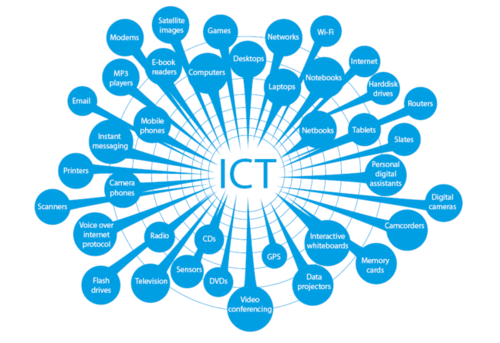The concept or dream of smart cities can no longer be regarded as a distant dream; they are now a part of daily life. Our lives have been improved by the Internet of Things, artificial intelligence, and other disruptive technologies. There are numerous aspects of smart cities that include energy distribution, transportation systems, street lights, traffic, and even garbage collection.
Using cellular and low-power wide-area (LPWAN) wireless technologies, local governments are connecting and improving infrastructure for residents’ convenience and quality of life.
Check out some of the best smart city initiatives to get you started.
1. Information and communication technology (ICT)

It describes the interplay of unified communications, telecommunications, and computers that enable users to efficiently access, share, and utilize information. Information and communication technology is an extension of information technology (IT).
2. Internet of things (IoT)

In recent decades, multiple technologies, including real-time analytics, machine learning, and embedded systems, have transformed society and industry. Consumers broadly associate IoT with the smart home including a host of appliances and devices that support multiple ecosystems. Healthcare also can benefit from the IoT.
3. OT security

The evolution of networks is leading to the development of 5G and low latency networks. There has been a growth in the OT sector, and the technologies and approaches differ widely. One major technology disruptor is memory protectors. IoT devices and microgrids will be enabled through secure and effective edge computing.
4. Geospatial technology

Cities that are smart use geospatial technology to make their environments more accessible and sustainable, and so they can detect natural disasters as well. This technology provides a wide variety of solutions to address citizens’ needs in the areas of water, transport, power, networks, supply, and civil service, among others.
5. Artificial intelligence

Together, AI and IoT can be used for implementing smart traffic solutions. It will make it possible for city residents to travel from one point to another efficiently. In Los Angeles, for instance, there is a lot of traffic. Several closed-circuit television cameras and road-surface sensors have been installed for the central traffic management system.
6. Blockchain

Intelligent cities require efficient and sustainable transportation, environmental, and security solutions given urbanization’s rapid growth. Block chain’s broad storage and distribution capabilities compensate for data centers’ high operating costs, insufficient recovery capacity, and impossibility to maintain Internet of Things support.
7. 5G

In order for the smart city revolution to be a success, this is one of the biggest and most crucial technologies. High-speed connections combined with millions of connected devices will make it possible for cities to become smart. Automated cars and efficient mass transit are two of the benefits of smart cities. Customers will be able to tour museums through AR and VR technologies.
8. LPWAN-enabled infrastructure

Smart cities will be built on large-scale wireless networks such as LPWAN and 5G. Providing seamless data-driven services to millions of residents requires intricate communications networks and infrastructure. Smart cities will be based on LPWAN as their core connectivity.
9. Smart cameras

A smart city should implement smart cameras, which have been a prominent technology for quite a while. A smart camera helps observe potholes, as well as investigate the root cause of fires. It is used as a street camera, a first responder’s bodycam, or to record the dash cam of a vehicle.
10. Contactless technology

Smart cities may use contactless technology for contactless payments, deliveries, reading meters, and health care. Additionally, it will improve public health and safety at the same time as it saves time and money.
It’s time for smart cities!
Smart cities are changing the way we live. As the world becomes more urbanized, open data is being used to solve some of the most pressing problems that cities face. With the help of big data, open data, IoT, and other emerging technologies, cities are becoming smarter, more efficient, safer, and more sustainable. The future is bright for smart cities! We hope this blog post has helped you learn more about some of the technologies that are being used to make our cities more sustainable. If you’re interested in learning more about the latest developments in smart cities, please subscribe to our blog to keep up-to-date on all of our latest articles.




